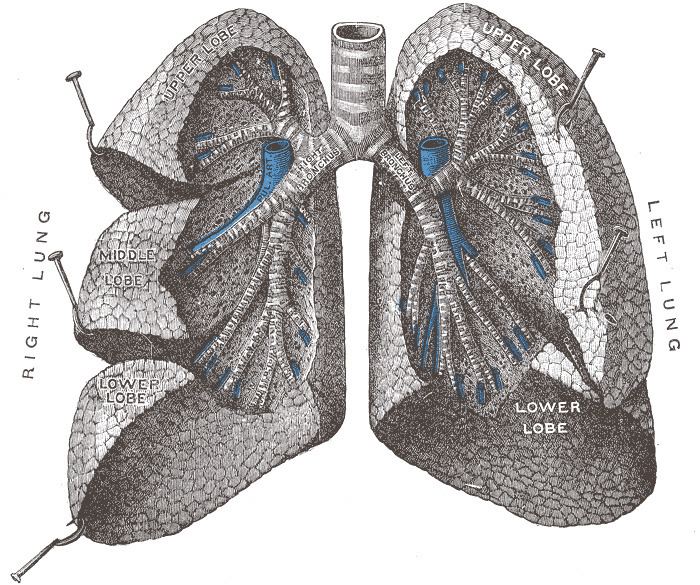TA A06.5.02.001 | FMA 76495 | |
 | ||
Latin segmenta bronchopulmonalia | ||
A bronchopulmonary segment is a portion of lung supplied by a specific tertiary bronchus (also called a segmental bronchus) and arteries. These arteries branch from the pulmonary and bronchial arteries, and run together through the center of the segment. Veins and lymphatic vessels drain along the edges of the segment. The segments are separated from each other by layers of connective tissue. Each bronchopulmonary segment is a discrete anatomical and functional unit, and this separation means that a bronchopulmonary segment can be surgically removed without affecting the function of the others.
Contents
There are 10 bronchopulmonary segments in the right lung: three in the superior lobe, two in the middle lobe, and five in the inferior lobe. Some of the segments may fuse in the left lung to form usually 8-9 segments (4–5 in the upper lobe and 4–5 in the lower lobe).
The delineation of the bronchopulmonary segments was made by Chevalier Jackson and John Franklin Huber at Temple University Hospital.
